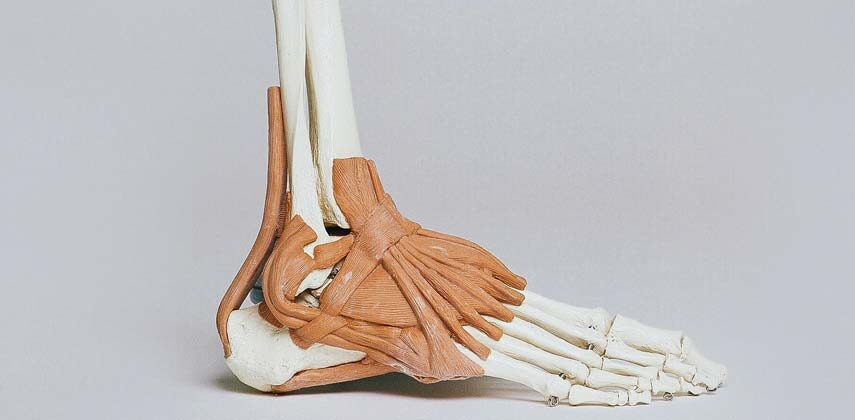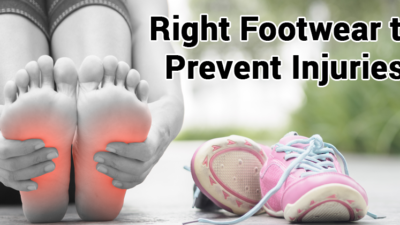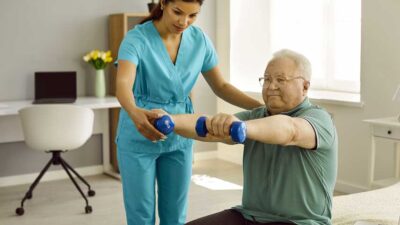Our feet are the foundation that supports our entire body and play a vital role in maintaining our balance, strength, and mobility. As we age, it becomes increasingly important to prioritize the health of our feet and ankles, which are often overlooked when it comes to exercise and overall body care.
Wear and tear on the joints naturally occurs as part of the aging process, and our feet and ankles are no exception. By paying attention to your feet and ankle joints and providing them with the care they need, you can help prevent common foot problems associated with aging, such as arthritis, Achilles tendinitis, and poor circulation.
This article has outlined some useful tips to help you take care of these essential parts of your body, ensuring they remain healthy and strong long into the future.
Invest in Good Footwear
Investing in good footwear is crucial for maintaining the health of your feet as you age. When shopping for shoes, prioritize comfort over style and ensure they are the correct size and width to avoid problems like bunions and other foot ailments.
For added support, consider purchasing shoes with cushioned linings or adding insoles to your existing pairs of shoes.
It’s also important to wear shoes that are suitable for the activity you’ll be doing. For example, if you enjoy sports, make sure your footwear provides adequate support and traction for the specific activity and surface you’ll be engaging in.
If you have high arches, it is beneficial to choose shoes with extra cushioning to help absorb the impact of walking or running.
Over time, shoes lose their ability to provide adequate support and cushioning, so it’s essential to replace them when they show signs of wear such as worn-out heels or tread.
Investing in good footwear and replacing worn-out shoes can help prevent foot problems and ensure that your feet and ankles are well looked after.
Feet and Ankle Exercises
Physical exercise and stretching are essential for maintaining the strength, flexibility, and suppleness of the muscles in your feet and ankles, reducing the risk of injury.
One of the most common foot issues that people seek medical attention for is plantar fasciitis, which can cause intense pain in the heel or the bottom of the foot. Exercises such as heel raises and toe curls can help alleviate this pain and prevent it from occurring in the first place.
Strong ankles are also essential for preventing balance problems and injuries such as sprains and twists. Ankle rotation exercises can help improve the strength and flexibility of the muscles, tendons, and ligaments in your foot and ankle, enhancing your mobility and reducing the risk of injury.
Most foot and ankle exercises require no specialist equipment, making them easy to perform at home as part of your regular stretching or exercise routine.
By incorporating these exercises into your daily routine, you can help to strengthen the muscles and joints around your feet and ankles, reducing the risk of injuries.
Chiropractic Care
As we age, our joints can become stiffer and less flexible, leading to discomfort and difficulty with movement. A chiropractor Alpheretta or from which city you are in, can offer a range of services to help improve overall joint health and mobility, allowing you to maintain your independence and quality of life as you age.
These can include:
- Manual Therapies: Using a range of hands-on techniques to improve joint mobility and reduce pain, such as joint manipulation, soft tissue massage, and stretching. These therapies can help improve circulation, reduce inflammation, and restore joint function.
- Customized Exercise Programs: A chiropractor can work with you to design customized exercise programs that focus on strengthening the muscles around your feet and ankles, helping to improve your balance, stability, and overall joint health.
- Lifestyle Modifications: A chiropractor can provide advice on lifestyle modifications that can help improve your joint health, such as proper footwear, nutrition, and hydration.
- Custom Orthotics: A chiropractor can create custom orthotics or recommend appropriate footwear to help support your feet and ankles and reduce pressure on your joints. This can be particularly helpful for conditions like flat feet or high arches.
- Pain Management: A chiropractor can provide pain management techniques such as heat or cold therapy, electrical stimulation, or acupuncture to help reduce pain and inflammation in your feet and ankles.
Stay on Solid Ground
To minimize the risk of an ankle injury and alleviate stress on the feet, it’s advisable to avoid walking or running on uneven surfaces like cobbled paths or rocky terrain.
It’s also important to be mindful of loose gravel and potential obstacles such as tree roots, logs, and bushes which can cause trips and falls, leading to potential injuries.
When engaging in running activities, it is advisable to choose softer surfaces such as soft grass and woodland trails over harder surfaces like concrete and asphalt which require more shock absorption on the ankle joints and feet, leading to stiffness, swelling and pain.
Hills can also increase the risk of injury, particularly when descending, as they put additional stress on the lower limb joints and ankles, potentially exacerbating any existing issues.
Rice Method
In the event of an injury, it is important to be aware of the Rice method as a first-line approach. Rice stands for rest, ice, compression, and elevation, and is a straightforward technique that can be used at home to manage minor injuries, helping to alleviate pain, reduce swelling, and promote healing.
The four-step Rice technique includes:
- 1. Rest: It’s essential to rest and protect the injured area as much as possible in the first two days to prevent further damage, reduce swelling and prevent bruising.
- 2. Ice: Applying ice to the injured area can help reduce swelling. Always place a towel over the ice pack or use bags of frozen vegetables to avoid applying the ice directly to the skin.
- 3. Compression: Using an elastic bandage to wrap the injured area provides support and helps reduce swelling.
- 4. Elevation: Keeping the injured area raised above the level of your heart can help reduce swelling and promote faster healing.
By incorporating these practices into your daily routine, you can enjoy the benefits of healthy feet and ankles for years to come.







 This article changed my life!
This article changed my life! This article was informative.
This article was informative. I have a medical question.
I have a medical question.
 This article contains incorrect information.
This article contains incorrect information. This article doesn’t have the information I’m looking for.
This article doesn’t have the information I’m looking for.